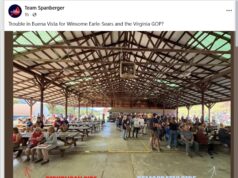Gardening and landscaping constitute an artistic genre I love. The beauty of that art, well practiced, moves me deeply.
One of my favorite places to visit is Golden Gate Park in San Francisco, a finite piece of urban land crafted generations ago by Frederick Law Olmstead so that it seems like a special world in itself. Another is the bonsai collection at the National Arboretum in Washington, D.C., each specimen of which is a beautifully executed work of art by, in most cases, generations of artists-and by the trees themselves.
The role of the trees in creating the beauty of the bonsais calls attention to a general truth: The art form of gardening/landscaping always represents a kind of collaboration between the artist (the gardener, the landscaper) and nature.
But the proportion of each – how much the artist imposes his vision, how much nature has scope to allow the life force to take its own path – varies greatly.
At one end of the spectrum is a garden like that at Versailles – the formal garden – pictured here. The human concept completely dominates the life elements provided by nature.

My own gardening practices are pretty far toward the other end of the spectrum. Nature, in other words, has a will of its own that’s expressed in the unfolding design of my garden.
Some of the reasons for this style of mine stem from my limitations as a gardener. But even if I had no such limitations – even if I were a master of the craft – I’d still work in that style.
First, the limitations. One is the limit on the time and energy I am able and willing to devote to the work of creating beauty on my land. I have other priorities, as readers here know, and with the time that I apportion to gardening I couldn’t impose my will very thoroughly upon this place even if I wanted to.
Another limitation is money. With enough money, one can buy the materials to execute elaborate designs, and buy also the labor of professional gardeners to implement the plans. I’m not willing or able to spend big bucks to buy a highly polished landscape.
Last, but hardly least, there are the limits on my artistic talents in the medium. I admire greatly people with an artist’s eye for fashioning beauty with the physical materials of gardening. But my own talents in visual media – which my mother saw to it very early in my childhood got every opportunity to flower – have always been quite modest. (I love Mozart and Bach, too, but that doesn’t mean I can write great music. So also with gardening.) I get some reasonably good ideas, but I often find that nature has better ones.
I live in the midst of a forest, a powerful living system that could quickly reclaim its domain if we humans disappeared. I have no intention of disappearing, but – for those reasons of my limitations, plus one more – living nature has an ongoing powerful hand in sculpting my landscape. I do create and execute designs. I choose plants and where to put them. Here and there I shape the land a bit. But much of my role is to read what nature wants to do, and then to help it do it in a beautiful way.
• Like the way the mint and the Greek oregano that I placed in my little herb garden have both broken out of their spaces and create a lovely intermingling on the hillside above the official “garden.”
• Like the way I’m allowing this vibrant and shapely sprout of an Alanthus a tree the experts have enjoined me to kill off– to grow for a while out of the base of my stone wall, because this shoot is a beautiful brushstroke put onto the canvas by Nature. (Later I’ll follow advice of the experts to extirpate all my Alanthus which, while being in some ways beautiful, is also a destructive, invasive plant that creates problems.)
• No poison ivy allowed. And every year I make casual war on snakeweed, the plant that killed Abraham Lincoln’s mother, and that I feel junks up the place in aesthetic terms, at least until the fall.
Besides the limitations that hinder my own powers, the other important reason for my style is a philosophy that’s grown out of my life experience in following my calling. What I do as a gardener/landscaper differs only in degree from what I do in the heart of my life’s work.
This began in my twenties, when I received a vision that I then spent years crafting into a form to convey to readers what I’d been given in a matter of minutes.
It continues into the present, such as the past nine years, when I’ve been on what I’ve been calling “my mission”: there’s been something beyond me – omething springing up from the pulsing core of things – that’s been running the show, while my job has been to channel that flow to get good results in the world.
Almost all the big insights, and almost all the important strategic choices, have seemed to come my way from some spiritual dimension of the life force.
To my craft as a writer, and also as a speaker, I bring more expertise than to my work as a gardener. But even so, the stream moving through me arises from beyond my control. It has a power that commands my deference.
And that respect and deference – the opposite of the formal gardens of Versailles – has become, over the forty years of my following my calling, my spiritual posture and artistic habit. Much of what I do – in my calling, as well as my gardening — is to put the paddle into the whitewater surging around me, working with the powerful currents of the life force to reach a desirable destination.
After a lifetime of being guided by some sacred force from the heart of life, I’m comfortable being as much the midwife as the mother of what’s created.
Were I a master of the genre of gardening, I’d choose for the artist’s hand to play a stronger role in crafting the picture being painted on the canvas of the landscape. Nonetheless, I feel good about the work of collaborating with the life force to create my gardens. And in them, imperfect as they are, I find a degree of beauty that pleases and satisfies me.
[Pictured here, one of the more artist-shaped parts of my landscape.
The right part of our “amphitheater:








![Monday News: Trump’s Lunacy Pushes China, Russia, India, etc. Together; “Happy Labor Day. Donald Trump and Elon Musk Are Screwing Workers.”; “Where is the [media’s] intense focus on Trump’s failing health?”; ““Trump says he is not a dictator. Isn’t he?”](https://bluevirginia.us/wp-content/uploads/2025/09/montage0901-238x178.jpg)








![Monday News: Trump’s Lunacy Pushes China, Russia, India, etc. Together; “Happy Labor Day. Donald Trump and Elon Musk Are Screwing Workers.”; “Where is the [media’s] intense focus on Trump’s failing health?”; ““Trump says he is not a dictator. Isn’t he?”](https://bluevirginia.us/wp-content/uploads/2025/09/montage0901-100x75.jpg)